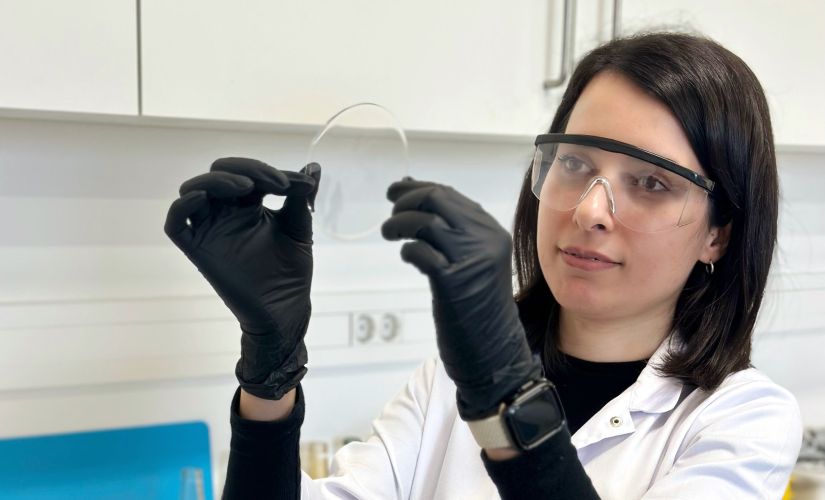Using the funding obtained from the 2nd edition of the ECIU Researcher Mobility Fund program at Lodz University of Technology, she is visiting the University of Aveiro in Portugal, where, for one month, she will be working with Dr. Cláudia Nunes’s, an expert in bioplastics, team.
During her visit to the University, she will be completing some tasks planned in the project called Multifunctional sensor based on bread waste-derived carbon dots and starch-containing alizarin for visual monitoring of food freshness, conducted in collaboration with the Aveiro Institute of Materials, the largest Portuguese institute in the field of materials science and engineering, boasting excellent material/biomaterial sciences laboratory facilities.
Dr. Zeinab Qazanfarzadeh explains: ‘The project will take 5-6 months to complete. We started working on it at ICRI-BioM, with the funding provided by Lodz University of Technology, from the extraction and synthesis of the primary biomaterials. The biosensor fabrication and some characterization will be carried out at CICECO – the Aveiro Institute of Materials. Finally, the application of biosensors in monitoring meat freshness will be completed at ICRI-BioM.’
The aim of the project is to develop a safe, simple, economical, and environmentally friendly biosensor that could be incorporated into the packaging of meat to monitor its quality during storage and to extend its shelf life. Deterioration of raw meat products is a major concern due to their short shelf life, ongoing biochemical changes, and microbial activity, even when stored at low temperatures.
As Dr Zeinab Qazanfarzadeh says: ‘The biosensing mechanism is based on the color change of the natural colorant (alizarin) in response to the alterations in pH which happen due to the release of volatile compounds during meat deterioration. Moreover, using starch and carbon dots derived from bread waste as the matrix and reinforcement agent of this packaging sensor, respectively, leads to economic benefits by reducing environmental pollution.’
What does she expect from the visit?
‘I believe that engaging in knowledge exchange with experts in material science and packaging, along with having access to specialized laboratories during my visit, should greatly enhance the quality of my project. Additionally, this collaboration and resources are going to play a pivotal role in propelling the project towards successful commercialization’, explained Dr. Zeinab Qazanfarzadeh.

